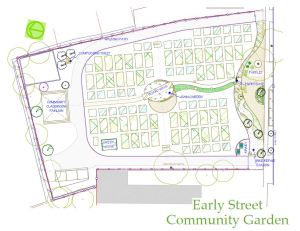As our grant cycle concludes, our excitement continues to build about all of the possibilities for a healthy community in Morristown. Our survey is complete, we have starting to build our walking path, and we now have a better sense of what local residents want and need to see in order to be healthier.
Our survey had 133 respondents comprised of residents from the area senior centers, parents from children who attend programs at the Morristown Neighborhood House, and participants in Atlantic Health’s Family Health Center. Participants primarily lived in Census Tracts 043500 and 043800, which have media household incomes of $47,394 and $75,309 respectively. Of those who responded, 39.4% identified themselves as Hispanic, 30% as African-American, 27% as White or Caucasian, and 3.9% as Asian.
While 58% of survey respondents said they make time to exercise regularly, those that don’t feel that it is expensive, or that they need additional support. We’re now brainstorming programming ideas for the redesigned garden that include free classes on fitness, walking, yoga and more.
Of those that exercise, 70% said they walk, so we’re confident that our new walking path at the community garden will be beneficial to these residents.
We began work on the walking path at the Early Street Community garden this summer. We had a landscaper come in to remove stumps and fences. They also cleared the roadway, graded it and then we had stone dust delivered and flattened it out to create the start of a path. The pathway is 3/4 of the way done. The other part will begin this November after we clear out the existing community garden plots to overhaul the entire space.
Also in the survey, we were surprised to find that 73% of residents said they eat fresh vegetables every day. Of those who said they’re not satisfied with their shopping choices for fresh vegetables, 55% say they aren’t happy with the price of available vegetables.
We also det ermined that 92% of respondents do not grow their own food — a low-cost way to obtain vegetables — and of those who don’t, 59% said it was because they don’t have space to grow.
ermined that 92% of respondents do not grow their own food — a low-cost way to obtain vegetables — and of those who don’t, 59% said it was because they don’t have space to grow.
This indicates that our garden expansion — to double the number of garden plots from 42-94 — will be a major boost to our community. We look forward to continuing our project this fall into next summer, when we hope to reveal the first phase of the garden redesign.
We are grateful for NJHCN’s support!






 survey, offer our thanks and get them to visit our Urban Farm! We found the coupon was highly successful, as the number of visitors to the Farm that weekend was much higher and many people turned the coupon in. We learned from this phase of the project that we need to partner again the Neighborhood House so that we can hire staff at the farm who are native Spanish speakers. When people come to the farm who speak Spanish, we’ll have a native Spanish speaker available to work with them, as our staff’s Spanish skills – while helpful for basic information – aren’t sufficient to make people feel at home at our projects, and that is what we’re after! So hats off to the Neighborhood House for all of their help – and for highlighting the importance of working with the community in mind!
survey, offer our thanks and get them to visit our Urban Farm! We found the coupon was highly successful, as the number of visitors to the Farm that weekend was much higher and many people turned the coupon in. We learned from this phase of the project that we need to partner again the Neighborhood House so that we can hire staff at the farm who are native Spanish speakers. When people come to the farm who speak Spanish, we’ll have a native Spanish speaker available to work with them, as our staff’s Spanish skills – while helpful for basic information – aren’t sufficient to make people feel at home at our projects, and that is what we’re after! So hats off to the Neighborhood House for all of their help – and for highlighting the importance of working with the community in mind!

